Do you have a question about the Gigabyte TRX40 DESIGNARE and is the answer not in the manual?
Guidelines and safety measures to prevent damage during installation.
Detailed list of CPU, chipset, memory, audio, LAN, expansion slots, and storage.
Step-by-step guide for installing the CPU and its cooler.
Instructions for installing DDR4 memory modules for optimal performance.
Guide on how to properly install expansion cards into PCI Express slots.
Instructions for configuring AMD CrossFire or NVIDIA SLI.
Explanation of all ports and buttons located on the motherboard's rear panel.
Information on status LEDs and quick buttons for system monitoring and control.
Details and pin assignments for various internal motherboard headers and connectors.
Overview of the BIOS startup screen and available function keys.
Navigation and function keys for Advanced and Easy modes in BIOS setup.
How to set and use frequently used BIOS options as favorites.
Options for CPU clock control, memory, voltage, and advanced core settings.
Configuration for Platform Power, IO Ports, USB, SATA, and Network Stack.
View motherboard/BIOS info, set language, date, and time.
Manage boot order, security, fast boot, and OS support settings.
Options to save changes, load defaults, or exit BIOS setup.
Steps to set the SATA controller mode to RAID in BIOS Setup.
Guide for installing the SATA RAID/AHCI driver during OS setup.
Procedure for installing drivers and software from the motherboard disc.
How to install GIGABYTE's utility applications and other software.
Details on drivers included on the disc and GIGABYTE contact info.
Learn about GIGABYTE's BIOS update tools like Q-Flash and @BIOS.
Manage GIGABYTE apps, check updates, and download drivers from a unified interface.
Enable system power saving via a Bluetooth-enabled smartphone.
Utilize HomeCloud, GIGABYTE Remote, Remote OC, and HotSpot for remote control.
Fine-tune system settings, overclock, and adjust voltages in Windows.
Shorten OS boot time by enabling or changing the Fast Boot setting.
Enable or specify lighting modes for select devices and motherboard LEDs.
Set custom hotkeys for mouse sensitivity, shortcuts, and passwords.
Back up partitions as image files hourly for system or file recovery.
Monitor and adjust fan speeds, and display hardware status.
Block specific USB device types on your PC, which are ignored by the OS.
Quick-charge Apple and Android devices connected to front USB 3.2 Gen 1 ports.
Configure speaker output, headphones, S/PDIF, voice recording, and DTS:X Ultra.
Read FAQs and follow procedures to solve system startup problems.
Understand system status through diagnostic LED codes during boot.
Information regarding copyright, disclaimer, and GIGABYTE's commitments.
Details on RoHS, WEEE directives, and battery disposal information.
FCC, IC, RED, and regional wireless usage restrictions and safety statements.
Guidelines and safety measures to prevent damage during installation.
Detailed list of CPU, chipset, memory, audio, LAN, expansion slots, and storage.
Step-by-step guide for installing the CPU and its cooler.
Instructions for installing DDR4 memory modules for optimal performance.
Guide on how to properly install expansion cards into PCI Express slots.
Instructions for configuring AMD CrossFire or NVIDIA SLI.
Explanation of all ports and buttons located on the motherboard's rear panel.
Information on status LEDs and quick buttons for system monitoring and control.
Details and pin assignments for various internal motherboard headers and connectors.
Overview of the BIOS startup screen and available function keys.
Navigation and function keys for Advanced and Easy modes in BIOS setup.
How to set and use frequently used BIOS options as favorites.
Options for CPU clock control, memory, voltage, and advanced core settings.
Configuration for Platform Power, IO Ports, USB, SATA, and Network Stack.
View motherboard/BIOS info, set language, date, and time.
Manage boot order, security, fast boot, and OS support settings.
Options to save changes, load defaults, or exit BIOS setup.
Steps to set the SATA controller mode to RAID in BIOS Setup.
Guide for installing the SATA RAID/AHCI driver during OS setup.
Procedure for installing drivers and software from the motherboard disc.
How to install GIGABYTE's utility applications and other software.
Details on drivers included on the disc and GIGABYTE contact info.
Learn about GIGABYTE's BIOS update tools like Q-Flash and @BIOS.
Manage GIGABYTE apps, check updates, and download drivers from a unified interface.
Enable system power saving via a Bluetooth-enabled smartphone.
Utilize HomeCloud, GIGABYTE Remote, Remote OC, and HotSpot for remote control.
Fine-tune system settings, overclock, and adjust voltages in Windows.
Shorten OS boot time by enabling or changing the Fast Boot setting.
Enable or specify lighting modes for select devices and motherboard LEDs.
Set custom hotkeys for mouse sensitivity, shortcuts, and passwords.
Back up partitions as image files hourly for system or file recovery.
Monitor and adjust fan speeds, and display hardware status.
Block specific USB device types on your PC, which are ignored by the OS.
Quick-charge Apple and Android devices connected to front USB 3.2 Gen 1 ports.
Configure speaker output, headphones, S/PDIF, voice recording, and DTS:X Ultra.
Read FAQs and follow procedures to solve system startup problems.
Understand system status through diagnostic LED codes during boot.
Information regarding copyright, disclaimer, and GIGABYTE's commitments.
Details on RoHS, WEEE directives, and battery disposal information.
FCC, IC, RED, and regional wireless usage restrictions and safety statements.
| Processor socket | Socket sTRX4 |
|---|---|
| Processor manufacturer | AMD |
| Compatible processor series | 3rd Gen AMD Ryzen™ Threadripper™ |
| Maximum number of SMP processors | 1 |
| ECC | Yes |
| Memory channels | Quad-channel |
| Memory slots type | DIMM |
| Number of memory slots | 8 |
| Supported memory types | DDR4-SDRAM |
| Maximum internal memory | 256 GB |
| Supported memory clock speeds | 2133, 2400, 2667, 2933, 3200, 3300, 3333, 3400, 3466, 3600, 3733, 3866, 4000, 4133, 4266, 4400 MHz |
| Supported memory module capacities | 32GB |
| Audio chip | Realtek ALC4050H + Realtek ALC1220-VB |
| Component for | PC |
| Motherboard chipset | AMD TRX40 |
| PC health monitoring | FAN, Temperature, Voltage |
| Audio output channels | 7.1 channels |
| Motherboard form factor | XL-ATX |
| Windows operating systems supported | Windows 10 Education x64, Windows 10 Enterprise x64, Windows 10 Home x64, Windows 10 Pro x64, Windows 10 x64 |
| Wi-Fi standards | 802.11a, 802.11b, 802.11g, Wi-Fi 4 (802.11n), Wi-Fi 5 (802.11ac), Wi-Fi 6 (802.11ax) |
| Bluetooth version | 5.0 |
| Ethernet interface type | Gigabit Ethernet |
| PCI Express x16 slots | 4 |
| RAID levels | 0, 1, 10 |
| Supported storage drive types | HDD & SSD |
| Supported storage drive interfaces | M.2, SATA III |
| Parallel processing technology support | 3-Way CrossFireX, 3-Way SLI, 4-Way CrossFireX, 4-Way SLI, Quad-GPU CrossFireX, Quad-GPU SLI |
| Number of SATA II connectors | 0 |
| BIOS type | UEFI AMI |
| BIOS memory size | 128 Mbit |
| Desktop Management Interface (DMI) version | 2.7 |
| USB connector type | USB Type-A, USB Type-C |
| USB 2.0 ports quantity | USB 2.0 ports have a data transmission speed of 480 Mbps, and are backwards compatible with USB 1.1 ports. You can connect all kinds of peripheral devices to them. |
| USB 3.2 Gen 2 (3.1 Gen 2) Type-A ports quantity | 5 |
| Cables included | SATA |
| Bundled software | Norton Internet Security cFosSpeed XSplit Gamecaster + Broadcaster |
| Harmonized System (HS) code | 84733020 |
| Depth | 269 mm |
|---|---|
| Width | 325 mm |
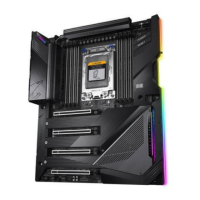
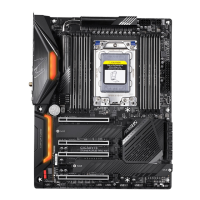
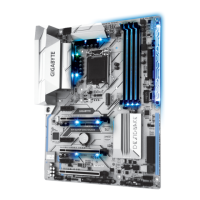



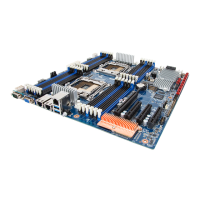

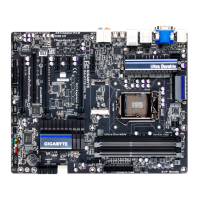



